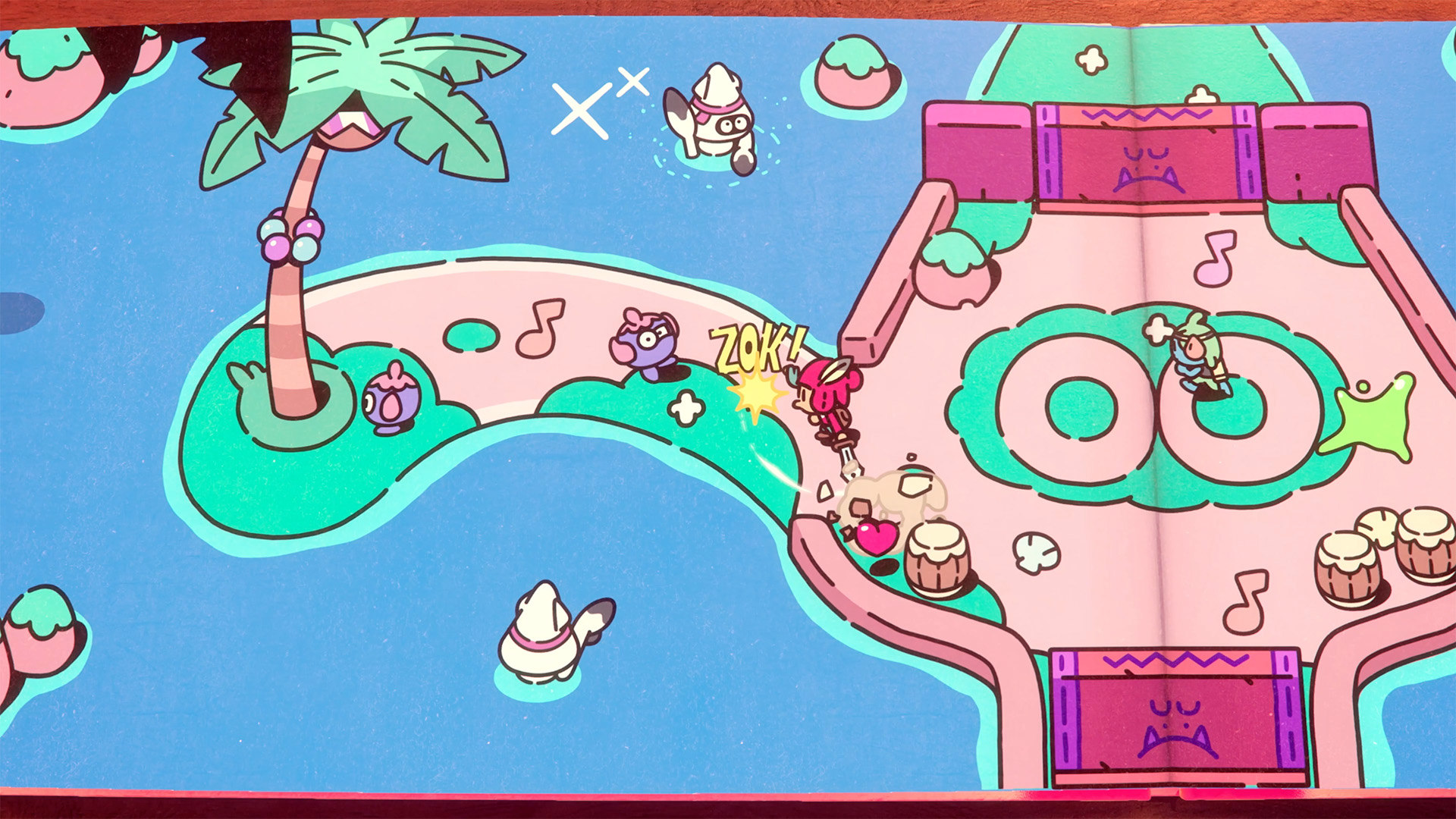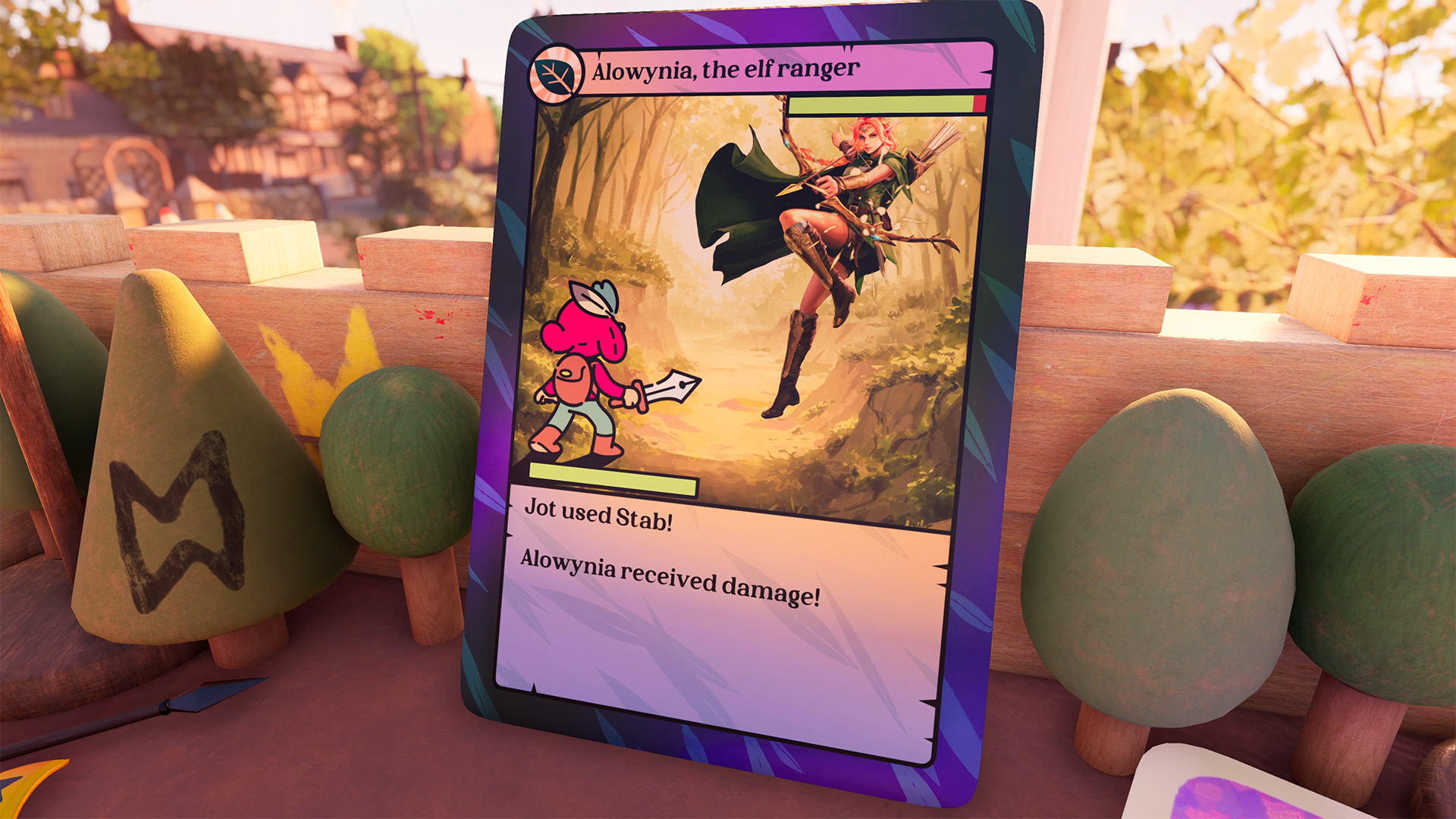The brave squire loses the plot as it leaps off the page
In The brave squirean adventure for all ages about a heroic hero who steps out of the pages of his fairy tale book, the currency you collect is not gold but Inspiration, represented by scattered, jingling light bulbs. Jot, the hero, fights with a sword shaped like the tip of a fountain pen as he fights to stop the evil wizard Humgrump – who has only just realized he is living in a fictional story and is the villain of the story – from using his “metamagic” to cast Jot out of the story and condemn their book to irrelevance. Without a hero, the book will gather dust on a shelf, no longer inspiring young minds like that of Sam, the book owner and Plucky Squire fan from whose messy room Jot sometimes appears.
And how does Jot spend the Inspiration he collects? By upgrading his sword attacks. It’s a remarkably uninspired choice, and unfortunately a typical one in a game that explores a charming and inventive premise with plodding, workmanlike, linear, video-game logic. The brave squire buys the inspirational power of children’s literature with well-meaning, sentimental intensity. But developer All Possible Futures doesn’t seem all that interested in video games as vehicles for ideas themselves.
Perhaps it would be more accurate to say that designers seem to find it difficult to come up with interesting applications for the ideas they do have. The brave squire often presents new, perception-bending, fourth-wall-breaking concepts. For example, Jot can pick up and swap words on the page, changing the meaning of sentences and the context of the story; a “huge” obstacle becomes “small,” a “flooded” area becomes “drained,” and so on. Elsewhere, Jot can step out of the book and tilt it to move things around, or turn back a few pages to jump through his own story in time and space.
These are truly great ideas, and they beg to be applied in ingenious ways. And yet The brave squire consistently places barriers around their use and fails to develop them. Each one becomes just another tool to fit into the game’s tightly bounded cause-and-effect puzzles. These puzzles can take some work, but even the most intricate ones rarely surprise or delight; it’s usually a matter of spotting prompts and figuring out the order in which to perform them. Eventually, the tools themselves run out of inspirational steam. A lock stamp that can be applied to the page to hold an item in place and time while everything around it moves seems like it might have potential; the next stamp Jot receives is a bomb stamp that just blows things up.
This is not how The brave squire feels to play at first. Jot is a cheerful hero who ventures into the pages of his book, using sharp attacks and a quick dodge roll for use in the precise, fast-paced 2D combat. He and his friends (including Thrash, a very metal rock troll, and Moonbeard, a DJ wizard in wraparound sunglasses) and enemies (bugs, boxing badgers, chubby little Goomba-shaped goblins) are charmingly drawn and animated in a tight illustration style, colored in vibrant pastels. It’s fun to bring the pages of a book to life—fun enough that the second or two of interruption as Jot wanders from one page to the next, and the page turns, isn’t too annoying.
The moment The brave squire starts to feel flat is, ironically, the moment Jot first appears in full 3D. This transition is the eye-popping centerpiece of the game’s trailers, as the plucky squire leaps through a swirling portal and explores the surface of the desk the book rests on, littered with paperclips, paint pots, toys, and sticky notes with illustrations for Jot to jump into. From a distance, it looks great, and technically it’s an impressively smooth transition. But with controller in hand, there’s no escaping the feeling of stepping from a bespoke, unique, and vibrant world into a generic 3D video game engine.
All Possible Futures has done its best to bring Jot’s full moveset into 3D, but the timing and hit detection are fractionally bad, and the combat and movement feel sloppy, less impactful, and less real. Sure, Jot is supposed to be a fish out of water in this world – but still, if you’re trying to sell the illusion of a living illustration experiencing tangible reality for the first time, the dull weightlessness of The brave squireThe 3D sections are the last thing you want.
Every now and then, the designers evoke moments of mischievous magic from Jot’s adventures in Sam’s room, such as when he steps from his desk into a pile of scattered puzzle pieces and must find a way to navigate this non-sequential maze, or when he Magic The Collection-style trading card to battle its elfin heroine for the price of her bow. Most of the time, these sections feature interchangeable 2D and 3D platforming that is disappointingly routine in its design, never exploring the dimensional transitions with the playfulness and cunning of, say, Link’s adventures in wallpaper in The Legend of Zelda: A Link Between Worlds.
The brave squire quickly settles into an episodic rhythm. Each chapter sees Jot and his friends explore a new location in the book, occasionally jumping out to solve puzzles or find a new power-up. Climax battles in the book sometimes take the form of simple, rhythmic mini-games, in which the cherubic little Jot is humorously given a muscular body. Throughout the game, All Possible Futures’ humor is better served by the vibrant art than the sometimes slimy writing, but it’s a fun world to explore, especially with kids.
To some extent, The brave squire is a victim of bad timing. It comes out as a sandwich between Astro bot And The Legend of Zelda: Echoes of Wisdom: two games set in adjacent, family-friendly spaces that also bring toy-like worlds to life and attempt to disrupt their own design with inventive powers and gadgets. Astro bot is carefully written and offers the player a simple yet comprehensive set of beautifully refined interactive inventions; Echoes of Wisdomgives players, according to early reports, the freedom to use the tools to solve challenges in a dizzying number of ways.
The brave squire can’t compete on either count. It’s a fantastic concept, but a mediocre design that fails to surprise or truly empower players. It’s a classic example of a game that should have made for a thrilling half-hour demo in the pitch phase, but never actually made it to production. For all the smug glee and almost twee sense of wonder, and for all the careful craftsmanship and obvious effort that went into its development, it lacks inspiration in itself, and fails to inspire the player. The light is there, but it never comes on.


